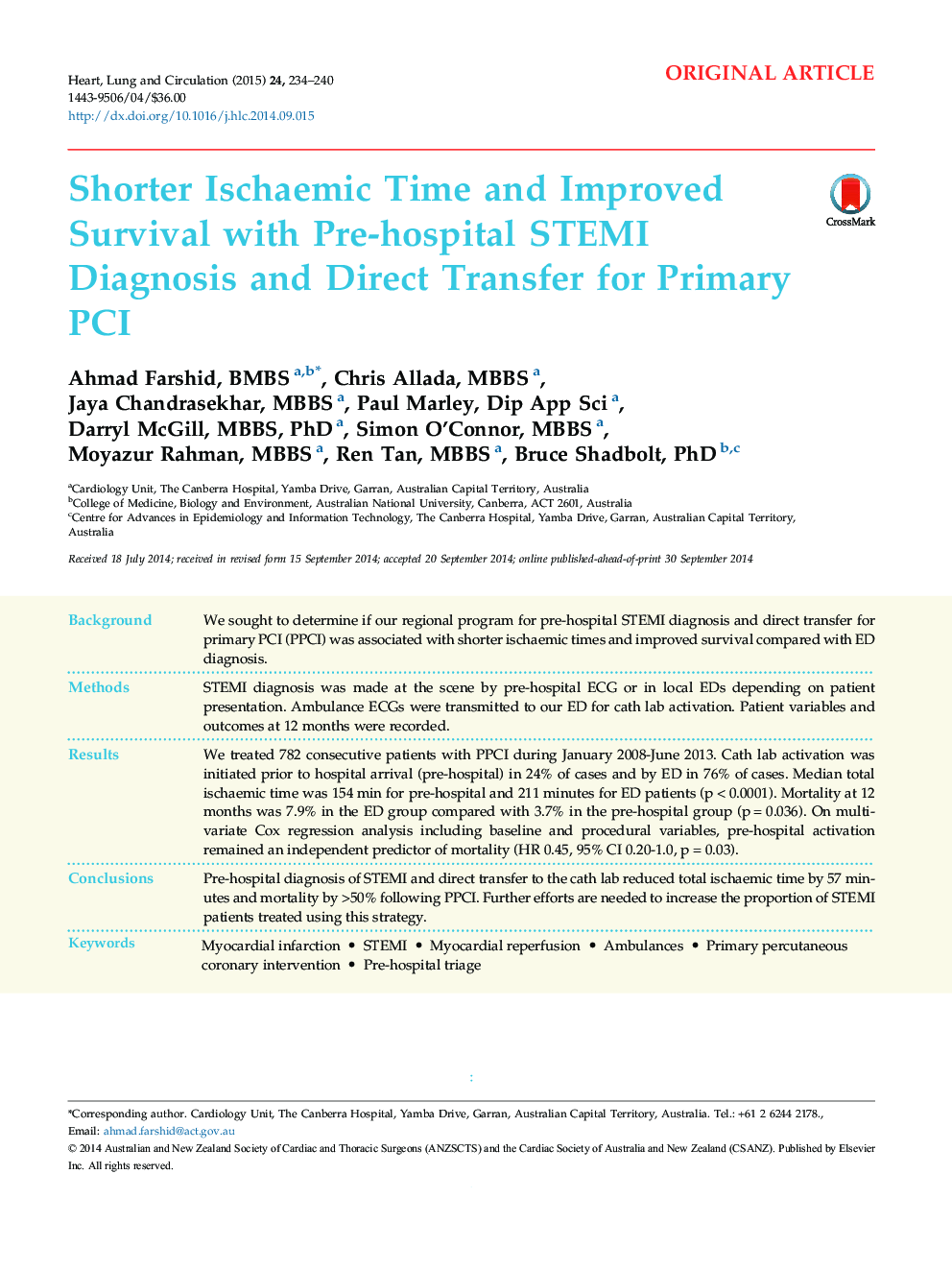| Article ID | Journal | Published Year | Pages | File Type |
|---|---|---|---|---|
| 2917060 | Heart, Lung and Circulation | 2015 | 7 Pages |
BackgroundWe sought to determine if our regional program for pre-hospital STEMI diagnosis and direct transfer for primary PCI (PPCI) was associated with shorter ischaemic times and improved survival compared with ED diagnosis.MethodsSTEMI diagnosis was made at the scene by pre-hospital ECG or in local EDs depending on patient presentation. Ambulance ECGs were transmitted to our ED for cath lab activation. Patient variables and outcomes at 12 months were recorded.ResultsWe treated 782 consecutive patients with PPCI during January 2008-June 2013. Cath lab activation was initiated prior to hospital arrival (pre-hospital) in 24% of cases and by ED in 76% of cases. Median total ischaemic time was 154 min for pre-hospital and 211 minutes for ED patients (p < 0.0001). Mortality at 12 months was 7.9% in the ED group compared with 3.7% in the pre-hospital group (p = 0.036). On multivariate Cox regression analysis including baseline and procedural variables, pre-hospital activation remained an independent predictor of mortality (HR 0.45, 95% CI 0.20-1.0, p = 0.03).ConclusionsPre-hospital diagnosis of STEMI and direct transfer to the cath lab reduced total ischaemic time by 57 minutes and mortality by >50% following PPCI. Further efforts are needed to increase the proportion of STEMI patients treated using this strategy.
